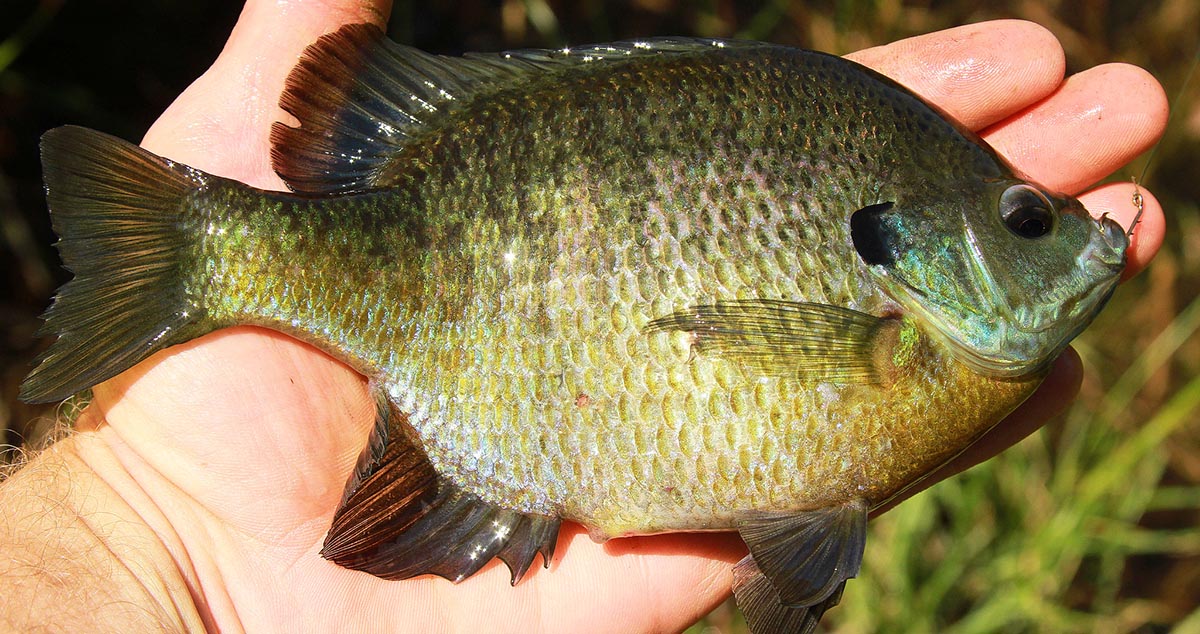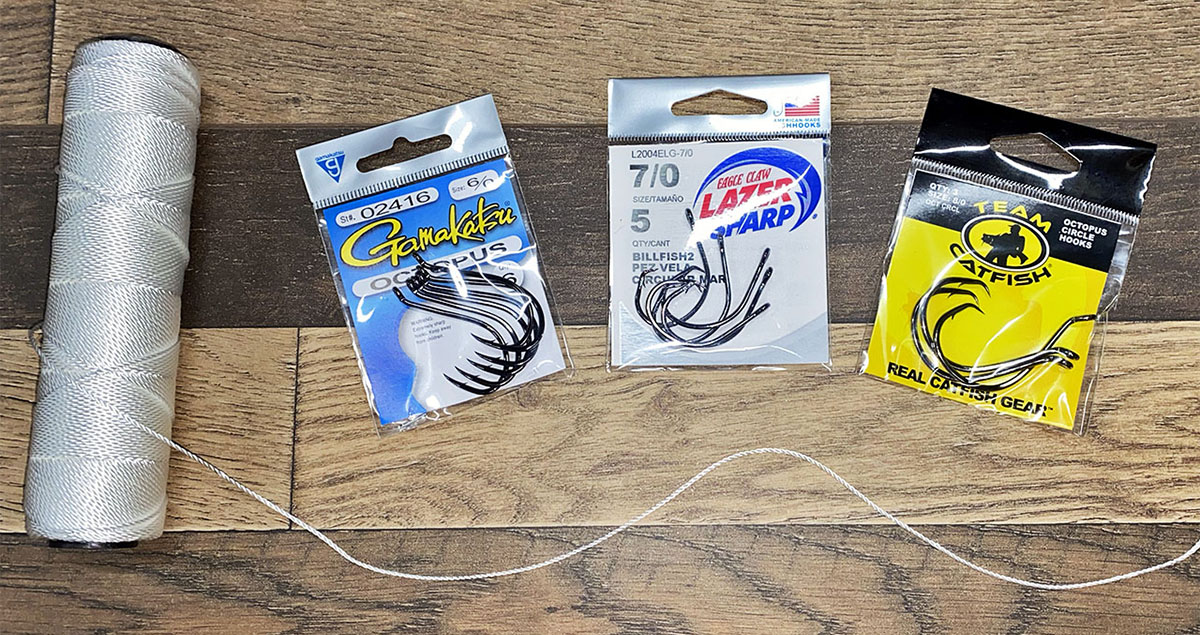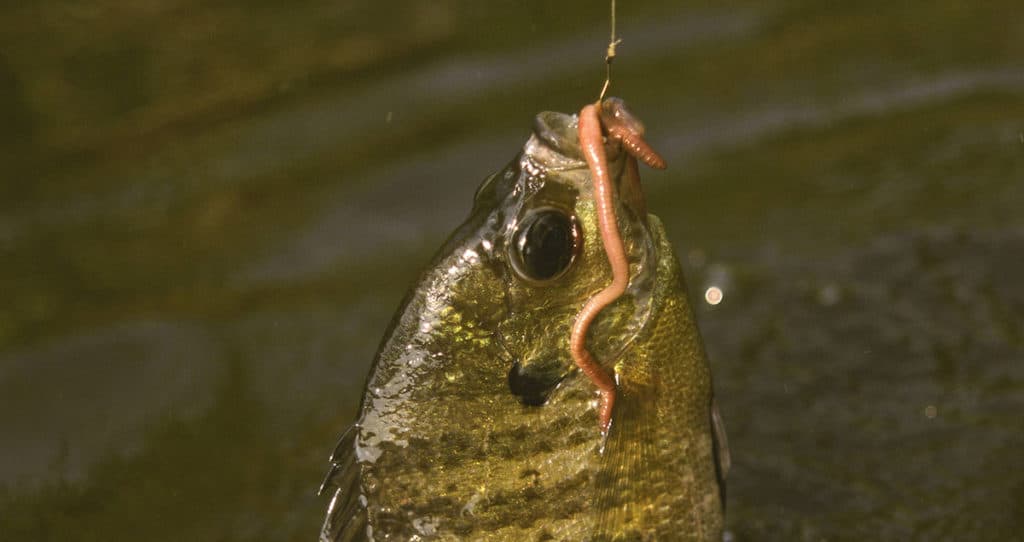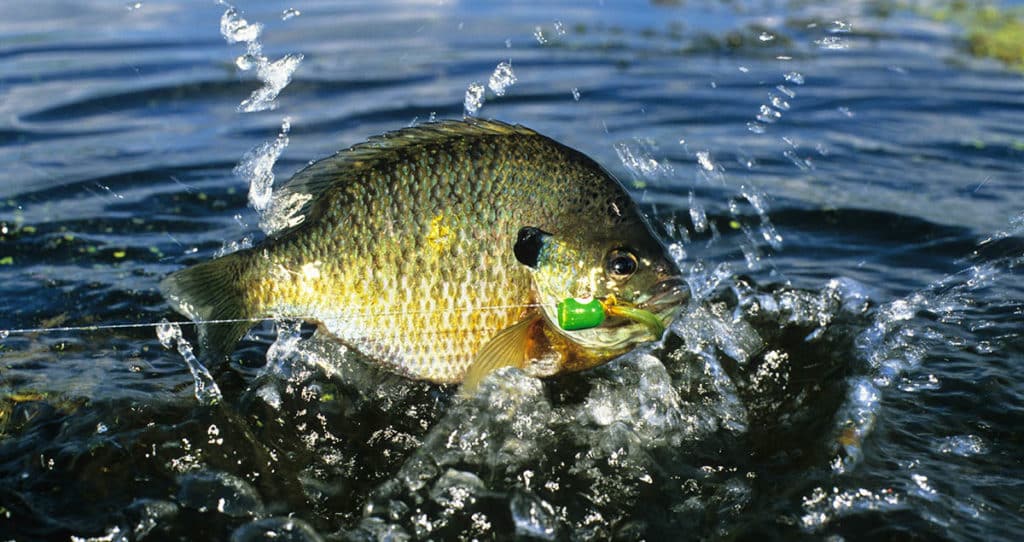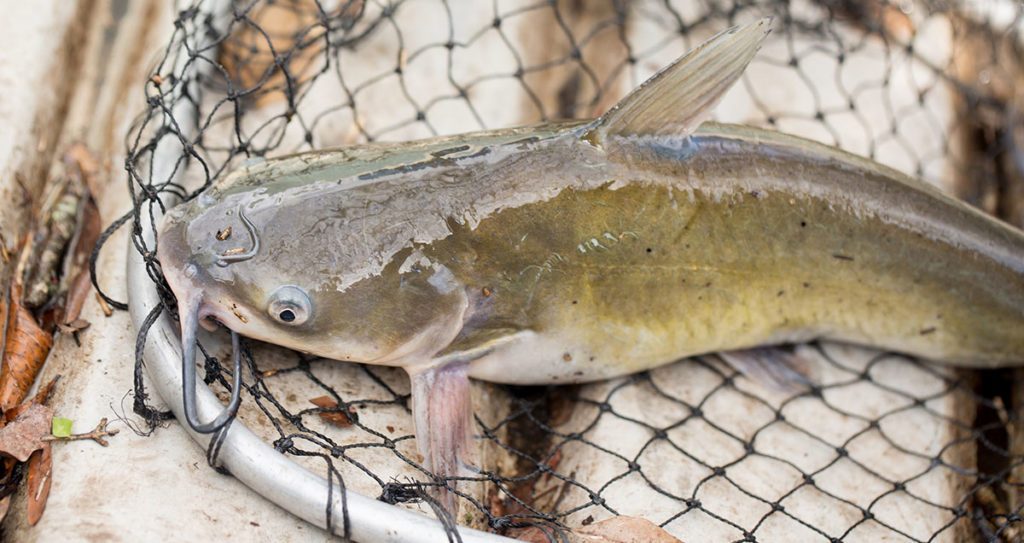While I love catching big bass and catfish as much as anyone, it’s hard to beat a great day of bluegill fishing when the action is hot. Fortunately, bluegill fishing opportunities are plentiful, and you can catch them on a wide variety of baits that are readily available from bait shops, pet stores, and possibly even the local grocery.
In this article, I want to cover the best bluegill baits, discussing both live and artificial baits, as well as a few alternatives worth trying when nothing else is working. Next time you have a few spare hours, grab your fishing pole and head to your local bluegill hole to give one of these baits a try.
Terminology: Bluegill, Bream or Sunfish?
While this article specifically refers to bluegill, we are using that term interchangeably with bream and sunfish. There are actually various species of sunfish — which includes bluegill — and the term bream is a popular common term for sunfish. Fortunately, the information provided in this article should apply to all of these common panfish. While they may differ a little in their coloration and habits, they all feed on the same types of insects, so any of the baits discussed here should be effective.
Live Bait
Fortunately for those of us who love to catch fish, bluegill are voracious eaters. They’ll eat just about anything they see that will fit in their mouth. Typically this is some type of insect or worm, although they also eat algae, fish and amphibian eggs, and other fish. So choosing a bait that will catch bluegill isn’t difficult. But some work better than others.
So if you’re the type that likes to kick back in a chair, relax, and wait for your bobber to start dancing on water, than any of these four options discussed below should get the job done.
Crickets
My absolute favorite live bait for bream and sunfish is crickets. They seem to be a favorite for the fish as well! I think it’s probably due to the movement of their legs while in the water that really attracts the attention of a hungry fish.
Fortunately crickets are readily available from both bait shops as well as pet stores due to their popularity as a food for various pet lizards. They can also be ordered online in bulk if you want to keep your own supply for future fishing outings. Just be aware they can create quite a stench in a short amount of time, so I’d recommend keeping them out of the living space of your home!
If you’re going to fish with crickets regularly, it would be a good idea to invest in a cheap cricket container to keep them while you’re fishing and make them easy to dispense without too many escapees!
When using crickets, be sure to hook them in a way that they stay on the hook as long as possible. All it takes is one good nibble on the hook, and you’ll likely be re-baiting your hook. That’s the biggest drawback to using crickets for bluegill fishing – they are typically only good for one cast.
Waxworms
Number two on my list is waxworms, which are the caterpillar larvae of the wax moth. Like crickets, waxworms are readily available at most bait shops and pet stores. While I don’t think they are as attractive to bream as crickets, they can still result in a stringer full of big panfish for the frying pan.
The biggest pro to using waxworms is they are the perfect individual size to bait a hook. One waxworm threaded on the hook should be enough bait to catch even the biggest bluegill, and they tend to stay on the hook for multiple casts if needed.
While I don’t recommend trying to raise waxworms, they can be kept for two to three weeks in their container in the door of a refrigerator.
Red Worms
What’s more American than sitting on a pond bank catching a limit of bluegill with a container of red worms? While they aren’t my first choice for catching bream or sunfish, they can certainly be effective, and are often more readily available at bait shops than some of the other options.
Unlike waxworms, where one worm is the perfect size to bait your hook, you’ll probably need to break your red worms into two or three pieces for bluegill fishing. That makes them a little more work and a good bit messier than crickets or wax worms. But it also makes the worms last a little longer.
With red worms, I like to thread them on the hook, leaving one of the ends dangling off the end of the hook so it generates some movement. Like wax worms, red worms can be kept in their container for a while as long as they are kept cool. Just not so cool that they freeze!
Meal Worms
The last live bait I use for catching bluegill are mealworms, which are larvae of the yellow mealworm beetle. They are larger than waxworms, and have a hard exoskeleton that make them a hardy bait that’s easy to thread on a hook. The availability of these can be hit or miss at the local bait shop, but they are pretty common at pet stores for their use as lizard food.
I use mealworms in a similar fashion as red worms, but I typically use a whole meal worm at a time for bluegill. I still leave a portion of the mealworm hanging off the end of the hook for movement.
Bluegill Lures
If you’re not the type who can sit back, relax, and wait for your bobber to start dancing, then that’s okay. There are plenty of great artificial baits for bluegill. Pretty much anything that creates movement and could be mistaken for another small fish or an insect will work. But I’ve found that even with hungry bluegill, some lures work better than others. Here’s my top four picks.
Grubs
While you can certainly catch bream and sunfish on a plastic worm, a smaller plastic grub is often the better choice. These grubs closely mimic traditional worms or grubs that a bluegill would naturally eat, so it’s easy to see why they’re effective. The best part is, unlike live bait, you’ll be able to reuse the plastic grub for multiple catches.
When using grubs, I like to slowly bounce them along the bottom. Bream will often hit them on the fall, so keep your line taught and be ready to set the hook when you feel something bumping the bait.
Another popular way to fish with a grub is on a jig floated below a bobber. You can slowly drift the bobber through the area where you expect bluegill are hanging out to entice a bite.
Inline Spinner Baits
I’ve always referred to these as “rooster tails”, but whatever you call them, they can be a fantastic way to fill up a stringer with big bream or sunfish. These are great baits if you’re a bass fisherman at heart who likes to constantly cast and reel.
Be sure to pick a color appropriate for the water conditions, and a size appropriate for the size of bream you’re targeting. Reel them in at a relatively slow, steady speed that keeps the bait from dragging the bottom. Bluegill typically feed on aquatic insects, which are not known for moving quickly, so they aren’t conditioned to chase their meal. So don’t reel your baits in so fast that the fish don’t have an opportunity to grab it as it passes by.
Sidebar: A Little About Artificial Bait Color Selection
Choosing the right color lure can be the difference between a full stringer or an empty one. In most cases, it’s a matter of matching the lure color to mimic the target fish’s most common food sources. That’s not super helpful for bluegill, because they’ll eat about anything small enough to fit in their mouth.
For bluegill, I focus on a colors that are most visible to the fish. That means bright colors like white, chartreuse, or silver. That’s not to say that other colors won’t work, but I’d start with those. If you don’t have any of those colors, just use what you have. If the bluegill can see it, and it’s hungry, it will likely bite it.
Spinner Baits
While I typically think of spinner baits as a bass bait, they can be effective for bluegill as well. Of course, you’ll want to adjust the bait size accordingly for catching bream, but the technique will be the same. Like rooster tails, fishing with a spinner bait is a cast-and-reel affair. Not a whole lot of finesse is necessary.
Imitation Minnows
I know this one is kinda broad, but any bait that imitates a minnow small enough for a bluegill to eat can be an excellent choice. That gives you a bunch of options in both hard and soft plastic. Just keep them small enough for the target fish and use them in a similar fashion as you would spinner baits – cast and reel in at an appropriate speed.
Leadhead Jigs
The last bluegill bait on my list is an old standard – the leadhead jig. If you’re not familiar, it’s simply a hook with a lead ball, or “head”, on the eye end, and a skirt that covers the hook end. I’m not really sure what type of insect it’s supposed to mimic, but whatever it is, bream like to eat them. I haven’t had as much luck with leadhead jigs as I have the other bluegill lures listed here, which is why I put it at the bottom of the list.
As far as fishing with a leadhead jig, I use them the same way I do the grub. I bounce the bait along the bottom, keeping my line taught as they fall so I know when a hungry bluegill strikes. You can also drift the jib below a bobber through areas where bream congregate.
Alternative Baits
If you’ve made a last-minute decision to go bluegill fishing, but don’t have any lures or live bait at your disposal, that’s okay. You probably have something right in your kitchen cabinets that will catch bluegill. Here are a couple options to help you spend a little time wetting a line.
Yellow Sweet Corn
A can of yellow sweet corn is cheap and will provide you with enough bait to last for several outings. In fact, you could use part of the can to chum up the fish before starting to fish the area.
Besides its easy access, corn is a great option because it’s easy to put and keep on a hook, and its yellow color makes it very visible in the water. Next time you’re heading to your favorite bluegill hole, grab a can of sweet corn and give it a shot!
Bread
It doesn’t get much cheaper than bread when it comes to potential bluegill bait. There have been countless bream reeled in over the years with nothing but a little bread on the hook. It’s cheap, effective, and readily available. The biggest downside to bread is trying to keep it on the hook. You have to cast carefully, and you’ll probably be replacing your bait every time you reel your line in. But hey, at least you’re fishing!
Wrap Up
Bluegill fishing is fun, doesn’t require any expensive equipment, and you have a long list of great options for bait. Not to mention, bluegill are delicious to eat! So next time you have a few hours free, consider hitting up a local lake, pond, or stream to target some bream. Odds are good you’ll catch a few fish and have a great time wetting a line.
We’d love to hear which baits work best for you. Be sure to leave us a comment in the comments section below telling us about your favorite bait for catching bluegill, sunfish and bream.

